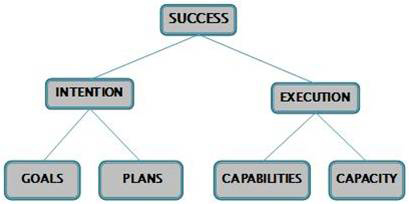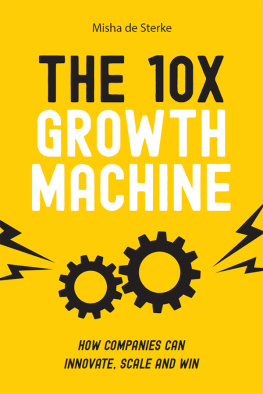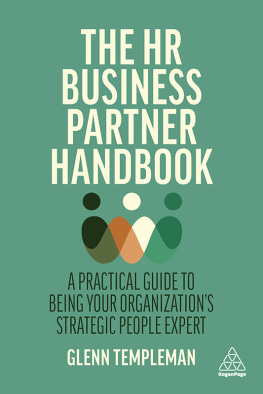
Rightsizing Your Business
Breakthrough Strategies to Create a Flexible and Profitable Business in Any Economy
Bill Welter

Avon, Massachusetts
Dedication
To all those business leaders who adapt before they have to react
Acknowledgments
I would like to acknowledge the help of Ed Mason, Allen Summers, Jim Stickler, Bill Geist, Dan Baumgartner, and Sam Fiorella. Thanks for your quick response to my sketchy questions.
Contents
Introduction
In the last decade of the twentieth century, business leaders started to use the term rightsizing. At first, it was a kinder, gentler substitute for downsizing. Why? Maybe because it didnt sound so mean and hardhearted (although employees knew perfectly well what managers meant by it).
Maybe business thinkers in the 1990s really thought that the right size of any business was smaller than whatever existed at the time. In any case, its unfortunate that the concept of rightsizing businesses was hijacked this way. Its time to put the concept back in its right place in our strategic tool box. Maximum success comes when a business is the right size.
Think about it for a moment. If a business is too big it wastes resources. If a business is too small it wastes opportunities. Like Goldilocks, what we want is a business that is just the right size. We need to redefine rightsizing as making your business the right size to optimize your business potential and execution. Its something you should address as part of your regular strategic planning work.
As you look at all aspects of rightsizing, you will, sooner or later, say, But thats so obvious! If you catch yourself saying that, ask yourself this: If its so obvious, why arent more businesses the right size?
Chapter 1
The Secret of Success
More often than not, a business finds itself suddenly confronted with the imperative to rightsize because it has not been paying attention to the larger world. Management either find themselves surprised by an extended down market, going into a crash downsizing effort to get costs under control; or they realize they are late to the game and try to ramp up in too short a time.
Rightsizing should be done on a proactive basis as part of your regular strategic planning efforts. You are literally trying to answer the question of Whats the right size for this company as we move toward our planning horizon? Once that conversation is underway it must continue on to the decisions that have to be made to change the size of your business.
The Structure of Success: Simple, But Hard
The secret to business success is simple: Match realistic intention and organizational execution know whom you need as customers and give them what they want. To do this youll need to accomplish four things:
- Define goals that, when achieved, will result in profit.
- Prepare plans to achieve the goals.
- Make sure you have the capabilities needed to execute the plans.
- Make sure you have enough of each of the needed capabilities.

Figure 1. The Structure of Success
Simple, right? Then why is it so hard to build and maintain a rightsized business? Well, think about these four factors in light of your own business.
- Goals : Do you know how realistic your goals are in light of the customers you have (and, more important, need)? Were Kodaks goals for its film business realistic in the early part of the twenty-first century?
- Plans : Do you have specific plans for the societal and industry changes that will determine the future of your business? Were magazines and newspapers really planning for a digital future?
- Capabilities : Do you have the knowledge, skills, and other resources needed for the future of your business? What dont you have that you should? Does Microsoft have the capabilities it needs to compete with Google?
- Capacity : What shortages will impact you? Where do you have excess resources? What will happen to RR Donnelleys printing plants when the Yellow Pages disappears?
How should you go about answering these questions? Many people tell you to think outside of the box; I simply want you to think in bigger boxes. You should do this because the future of your business can usually be seen in the context of the bigger boxes surrounding you.
The Context for Success
As of Fall 2011, Apple is changing at least three industries simultaneously: the music distribution industry, the telephone industry, and the personal computer industry. Youd probably love to be in the position of changing/leading your industry, but thats not realistic for the vast majority of businesses. Most of us have to respond to changes in our industry that are out of our control.
The challenge of responding to industry evolution in encapsulated in the phase attributed to Joseph Schumpeter, the Austrian American economist who studied innovation in the 1930s and 1940s creative destruction. Simply put, industries evolve because of constantly changing needs, wants, and capabilities. They do so in an amoral sense creative destruction is neither good nor bad; it just happens. Some companies take advantage of the opportunities created by this evolution. At the same time, the change destroys opportunities that other companies, unfortunately, were based upon.
Semiconductors, for example, created opportunities for Fairchild and Intel, but made RCA and Sylvania irrelevant. The Internet has created wonderful opportunities for Google and Facebook, but has nearly destroyed the newspaper industry. The rise in oil prices has been good for Toyota, but seemingly caught GM by surprise. And social media is turning the advertising industry on its head.
In order to respond to these changes in a timely and accurate manner you need to consider the context for most change in the business world. You need to consider the bigger boxes of your industry, the economy, and society.

Figure 2. The Context for Success
All of the bigger boxes have the potential to trigger waves of creative destruction and will gently or not-so-gently bring about the need for you to rightsize your business. The desire to buy McMansions in the 1990s triggered an upsizing at many homebuilding companies. Unfortunately, the Great Recession of 2008 triggered a drastic downsizing for the same companies. The advent of MP3 technology brought Sony low and raised Apple high. The fall of the Berlin wall triggered a series of events that caused the downsizing of many defense companies, but the terror attacks of 9/11 reversed the tide.
Most of the changes affecting your business come from the bigger boxes. If you stay aware of changes in society, the economy, and your industry you have a chance at proactively rightsizing your business. If you ignore the winds of change you will always be reacting a bit too late.
A Process to Guide Your Thinking
If creative destruction is real and it is the rightsizing challenge is to sense the signals of change coming from the bigger boxes and to respond to these signals in an appropriate and timely manner. Furthermore, unless you are getting ready to retire soon, you will have to do this again and again. With that in mind, consider a simple cycle to use as you think about the need to rightsize your business and the foundation that underpins this need.












